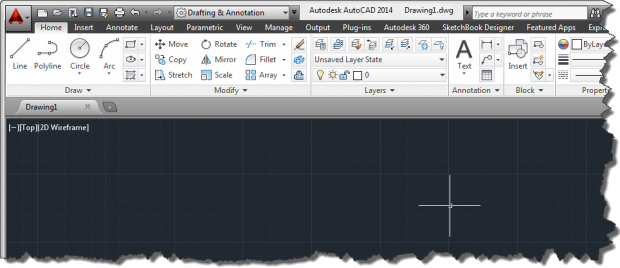While at college I was introduced to not only AutoCAD (r13) but also to the still fairly new Mechanical Desktop (1.2), so yes I’ve been around for a while. When I started at the Autodesk reseller that I worked at for over 10-years the first “new” product I got learn inside and out, from top to bottom, was AutoCAD Mechanical. So AutoCAD Mechanical has a special place in my heart.
If you are attending Autodesk University this year you can check out my class on AutoCAD Mechanical. A one-hour lecture on AutoCAD Mechanical called the “ABC’s of AutoCAD Mechanical” in which we will, in rapid fire like progression, go over what will hopefully bring a new level of productivity to your AutoCAD work.
You can register for Autodesk University at http://au.autodesk.com/, my class is MA2870 – The ABC’s of Autodesk® AutoCAD® Mechanical
Are you working with Autodesk AutoCAD software but wish you had more tools designed specifically for manufacturing? Are you using the Autodesk® Product Design Suite but wonder what this included thing called Autodesk® AutoCAD® Mechanical is for? Ever wished you could take experienced AutoCAD users and use their skills to detail your Autodesk® Inventor® software 3D models? If you answered yes to any of these questions, then this is the class for you. In this fast-paced, rapid-fire class, we look at the things that make AutoCAD Mechanical software special. We explore why you should be using it for your mechanical and manufacturing design and detailing, including examining the built-in calculators, component library, detailing and annotation tools, defining structure, and the other “nuts and bolts” contained within.
It was in preparing for this class that I decided to write this series of articles for Design and Motion.
A quick history lesson
It was the late nineties and Autodesk was already on its path to verticalizing (if that’s a word). They were developing and acquiring software that was specific to certain industries; including Mechanical Desktop for the manufacturing realm.
With the release of Mechanical Desktop 2.0 (and AutoCAD 14) they introduced a free upgrade for AutoCAD users to a new flavor of AutoCAD called AutoCAD Mechanical. The initial version of AutoCAD Mechanical consisted of one toolbar of mechanical & manufacturing features, mostly symbols. With the next release (14.5) they added Bill of Materials functionality.
In 1998 Autodesk acquired Genius, which at the time was one of Autodesk’s biggest purchases. It took a couple releases to get it fully integrated, but Genius was merged into ACM to become the product it is today
Why should you use it?
I’ll apologize now if this comes across as a bit ‘Salesy’. As I said earlier this product has a special place in my heart. It was unfortunate that just as it was hitting its stride the world of 3D EXPLODED making Mechanical easy to dismiss. Who needs a tool to create a top view of a bolt when it just happens automatically for you in Inventor?
We have to remember that even though the interface is setup a bit different it is still AutoCAD and everything that AutoCAD can do, so can AutoCAD Mechanical. So if you are a vanilla AutoCAD user in the manufacturing realm stop now, call your reseller, and get the upgrade. For the slight bump in subscription costs you’ll more than make up for it in productivity.
AutoCAD User Interface
AutoCAD Mechanical User Interface
If you are using one of the Manufacturing Suites (Factory or Product Design) surprise! You already have it. I know what you are thinking, I have Inventor why do I need some flavor of AutoCAD? We too use Inventor for the majority of our CAD work but rely on AutoCAD Mechanical for our hydraulic schematics and maintaining legacy drawings that we will not be converting to 3D. Take a look at it; you might be surprised how much it can do for you.
In the next post I’ll cover how to apply standards, make use of superior geometry creation tools and AutoCAD Mechanical’s use of Content.
THE OTHER POSTS IN THE SERIES:
Why should you use AutoCAD Mechanical? Part 2








